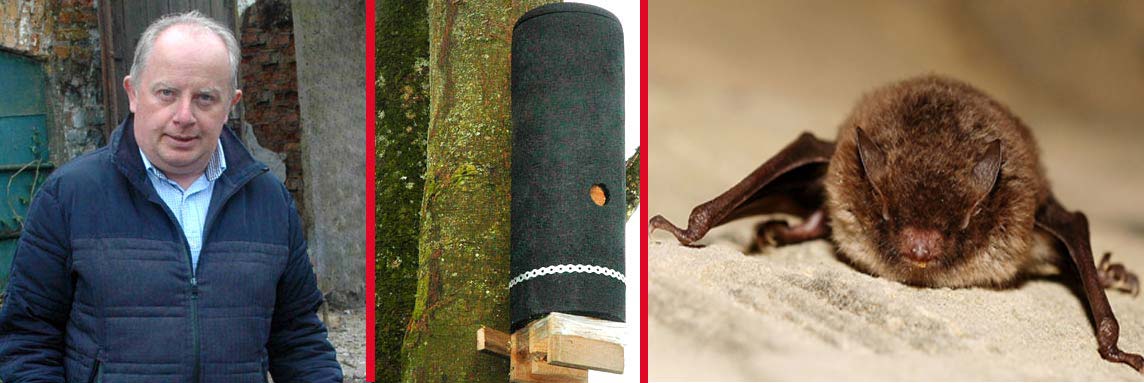Work is well under way in relation to the clearing of the site for the new Thurles car park, situated on the ‘Money Side’, south of Liberty Square here in the town.
This development has involved a great deal of unseen, yet necessary planning and preparatory work, prior to its commencement; as Templemore/Thurles Municipal Engineer Mr Michael Tierney explained today.
All new development areas currently; even areas requiring just site clearance for a car park, must take into account fully those residing and using the area. And I am not just talking about humans, I this case I am also talking about wild life inhabitants who rightly use this area, and whose needs and well-being must also be also fairly considered. So, let’s take the case of the Thurles Daubenton’s Bat for example.
Note: Bats as we know, in general, are small, furry, intelligent animals often referred to as being like ‘Mice with Wings’. Indeed, almost one quarter of all land mammals’ resident here in Ireland are bats. Despite the often-used idiom, “Blind as a Bat”, indeed the contrary is true, as bats are far from being blind, having excellent vision and seeing perfectly well, while also truly taking possession of the night through their capability and use of sonar. Flying at high speeds bats listen using echolocation (biological sonar) and can locate insects faster than any of our much loved feathered friends; making their their appearance at dusk, when our insect activity is to be viewed in maximum throng. [And no girls, bats do not get tangled up in your long hair.]
We are aware that some seven different types of bats have been identified as residing here in our Emerald Isle. They are:- (A) The Lesser Horseshoe; (B) Pipistrelle (Latter the small common bat); (C) The not so common Natterer; (D) The Long Eared Bat; (E) The rare Whiskered Bat; (F) Ireland’s largest bats known as Leisler’s; and finally (G) Water bats called Daubenton’s, latter first described by the German naturalist and zoologist, Heinrich Kuhl, back in 1817, who named them in honour of the French naturalist Louis-Jean-Marie Daubenton.

Pictured Left-Right: (1) Templemore/Thurles Municipal Engineer Mr Michael Tierney: (2) A Large Hibernation Colony Bat Box; (3) A Daubenton’s Bat.
The Daubenton’s Bat (Myotis daubentonii. Irish-Ialtóg uisce.)
The Daubenton’s bat is a Eurasian bat with short ears and is thankfully considered to be increasing their population growth in many areas. More often called the ‘water bat’, this species is easily recognised at dusk, flying just a few centimetres above the surface of our River Suir, latter which runs parallel slightly to the east of this new car park amenity. This species of bat can be spotted skimming above the surface in search of midges, caddisflies, moths, beetles, daddy long-legs, mayflies, earwigs, and spiders, and may even scoop prey from the very surface of the water. While other bats feed over and around water; none hold the same close association with water as do Daubenton’s, which can even swim, should it accidentally end up in the water.
While none of these bats have been identified as currently residing in the new car park’s immediate vicinity, new Hibernation Colony Bat Boxes have been installed just in case, since the area is part of their rich hunting ground. Bats never settle individually, preferring to live in colonies, so these boxes, high in the trees, now allow for large numbers of bats to congregate together, in a dry, safe place and are ideal for use as bat nurseries for their young.
Bats hibernate in the wintertime. This is necessary since there are not many insects available to eat during our Irish winters. When they hibernate, their heartbeat slows down, while their body temperature is also lowered. This helps them to save their energy and survive a cold winter.
Yes, we as humans remain the minds and the stewards of our everyday living world, and to avoid a catastrophic loss of biodiversity, we must fully realise that our own ultimate future, as living human beings, also depends upon our greater understanding of the natural environment and where necessary we must allocate and learn to share ecological real estate.

Leave a Reply